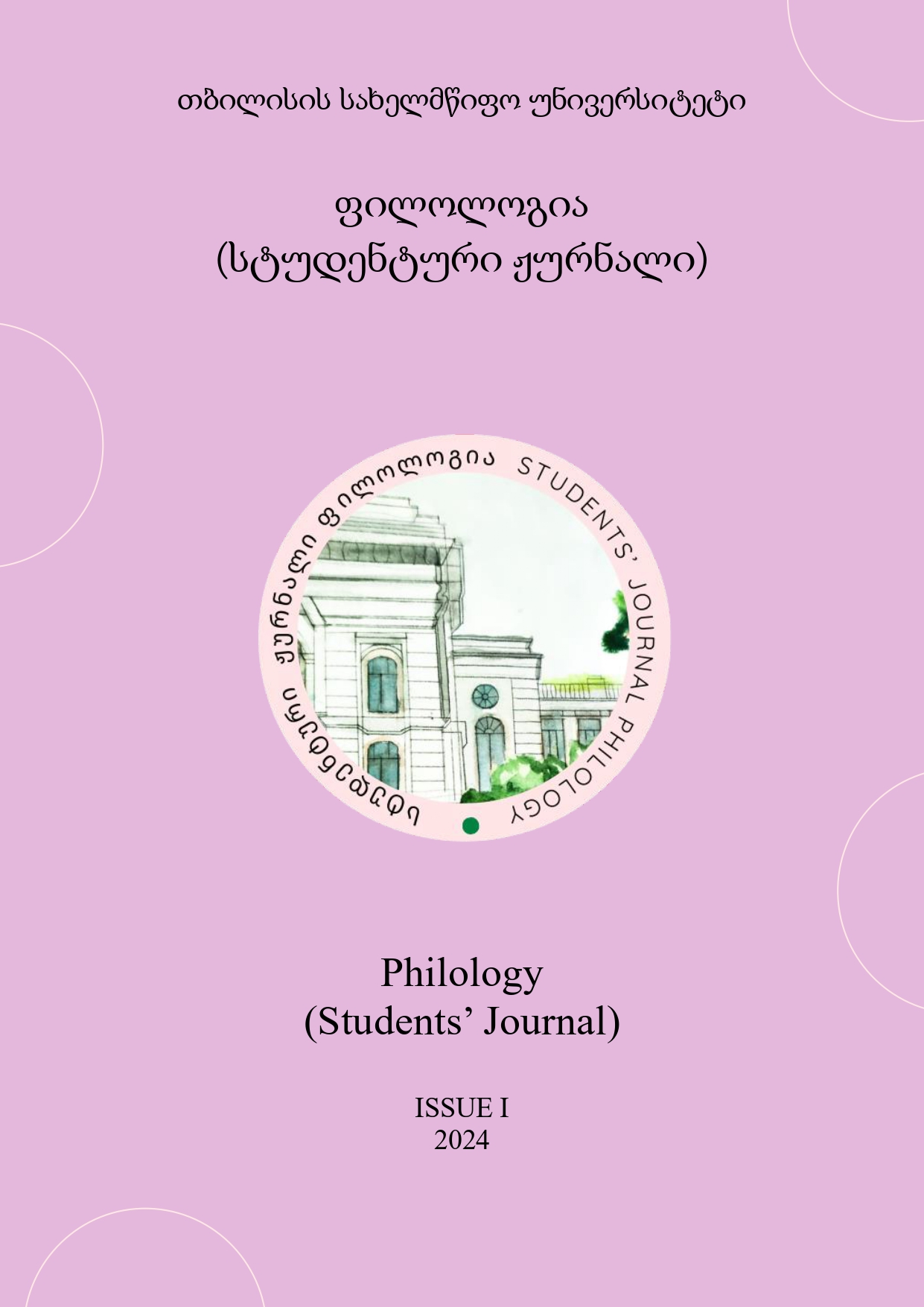Feminine Narrative in Virginia Woolf’s Works (Based on “Mrs. Dalloway” and “Orlando: A Biography”)
Keywords:
Virginia Woolf, Feminine Narrative, Gender, Feminism, Orlando, Mrs. DallowayAbstract
Virginia Woolf, one of the most influential modernist writers, creates and presents a unique discourse on gender in her works. She focuses on the configurations of femininity and masculinity, gender, female experience and narrative. Her works have had immense influence on Gender, Women’s and Feminist studies.
The presented paper will focus on one of the characteristics of Woolf's works: the female narrative, which is not only based on feminist views but also theories of gender fluidity and gender neutrality. With this perspective, Virginia Woolf constructs modern ideas on gender. These themes are most prominently discussed in two of her novels - “Mrs. Dalloway” (1925) and “Orlando: A Biography” (1928). The paper aims to define how feminine narrative is constructed in the above-mentioned novels and how modernism views gender, sexuality and feminism according to Virginia Woolf.
At first glance, these novels seem very different, both structurally and thematically. “Mrs. Dalloway” tells the details of one day in middle-aged Clarissa Dalloway's life as she is planning a party. Here Woolf uses a stream of consciousness, depicting the thought process of her characters. Clarissa Dalloway is seen as the epitome of womanhood and femininity.
In Orlando, we don't see much of Woolf's distinctive stream of consciousness. It is written as a form of biography, following a linear plotline, protagonist, complex and actiondriven plot. The plot, contrary to “Mrs. Dalloway”, spans centuries as the character travels through eras and genders. Orlando is a discussion on gender fluidity and neutrality, here Woolf stresses how gender is not only defined by sex, but by mindset.
Despite these differences, Virginia Woolf creates complex feminine narratives in each of them, making these novels important works of gender and feminist studies. The research paper offers analysis of selected passages from “Mrs. Dalloway and “Orlando: A Biography” that discuss Woolf’s theories on femininity, gender neutrality/fluidity and sexuality, many of which have been adapted in contemporary society; the paper intends to extend the understanding of the basis of Woolf’s theories on the above-mentioned themes.
References
ვულფი, ვ. (2012). მისის დელოუეი. თარგმანი: ძნელაძე, გ. გამომცემლობა პალიტრა L, თბილისი.
ვულფი, ვ. (2018). ორლანდო. თარგმანი: დუმბაძე, ლ. ბაკურ სულაკაურის გამომცემლობა, თბილისი.
Woolf, V. (2004). A room of one's own. Penguin Books.
Kelsey, M. E. (1931). Virginia Woolf and the She-Condition. The Johns Hopkins University Press.
Hastings, S. (2008). Sex, Gender, and Androgyny in Virginia Woolf's MockBiographies “Friendships Gallery” and “Orlando”. ETD Archive. 520.
Ronchetti, A. (2004). The Artist, Society and Sexuality in Virginia Woolf’s Novels.
Littleton, J. (1995). Mrs. Dalloway: Portrait of the Artist as a Middle-Aged Woman. Duke University Press.


